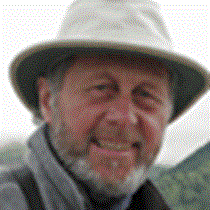Isla Rasa, Baja California Sur
This was a day for the birds!
Marine mammals, colourful fish and scenic desert islands have rightfully taken the spotlight so far during this adventure, but today the birds came to bat. Through the morning, as we motored northward among the midriff islands, small seabirds such as least storm-petrels, black storm-petrels, Craveri’s murrelets and red-necked phalaropes caught our eye. Boobies and pelicans plunged here and there. And a slide presentation detailing the fascinating adaptations of birds to the harsh, salty, windy ocean environment helped to set the tone.
As could be expected, however, dolphins and whales stepped to the plate again, briefly but with spectacular performances. Two unbelievably close blue whales, moving in tandem, surfaced just off our bow. Plate-glass water revealed their soft gray colour and muscular mass. Still air resounded with the blast of their blows.
And the dolphins, at first moving leisurely as dolphins do, suddenly, on some mysterious signal, set off at lightening speed. Another home run!
In the afternoon, the birds appeared to have let us down. Our long anticipated visit to Isla Rasa, the premier nesting island in the Sea of Cortez, looked perfect at first. Heermann’s gulls and elegant terns wheeled endlessly around this flat platform of volcanic rock. But many more of their kind were yet to arrive; they had not yet settled in to nest en masse.
We moved slowly around the shoreline. Peregrine falcons, American oystercatchers and a wayward black-crowned night-heron were here, but the gulls and terns were hanging off. Sea lions played with us, while Brandt’s cormorants and a blue-footed booby posed.
The winning runs came with a grand-slam at sunset. Thousands of Heermann’s gulls assembled on the flat water as wispy clouds in the western horizon took on melding tones of red, orange and blue. As many as 240,000 gulls and 180,000 elegant terns will soon be triggered to invade this island, jostling and squabbling for space so that the world’s population of these species will continue. We delayed everything so that we could witness a true spectacle of nature.
And the birds won the game.
This was a day for the birds!
Marine mammals, colourful fish and scenic desert islands have rightfully taken the spotlight so far during this adventure, but today the birds came to bat. Through the morning, as we motored northward among the midriff islands, small seabirds such as least storm-petrels, black storm-petrels, Craveri’s murrelets and red-necked phalaropes caught our eye. Boobies and pelicans plunged here and there. And a slide presentation detailing the fascinating adaptations of birds to the harsh, salty, windy ocean environment helped to set the tone.
As could be expected, however, dolphins and whales stepped to the plate again, briefly but with spectacular performances. Two unbelievably close blue whales, moving in tandem, surfaced just off our bow. Plate-glass water revealed their soft gray colour and muscular mass. Still air resounded with the blast of their blows.
And the dolphins, at first moving leisurely as dolphins do, suddenly, on some mysterious signal, set off at lightening speed. Another home run!
In the afternoon, the birds appeared to have let us down. Our long anticipated visit to Isla Rasa, the premier nesting island in the Sea of Cortez, looked perfect at first. Heermann’s gulls and elegant terns wheeled endlessly around this flat platform of volcanic rock. But many more of their kind were yet to arrive; they had not yet settled in to nest en masse.
We moved slowly around the shoreline. Peregrine falcons, American oystercatchers and a wayward black-crowned night-heron were here, but the gulls and terns were hanging off. Sea lions played with us, while Brandt’s cormorants and a blue-footed booby posed.
The winning runs came with a grand-slam at sunset. Thousands of Heermann’s gulls assembled on the flat water as wispy clouds in the western horizon took on melding tones of red, orange and blue. As many as 240,000 gulls and 180,000 elegant terns will soon be triggered to invade this island, jostling and squabbling for space so that the world’s population of these species will continue. We delayed everything so that we could witness a true spectacle of nature.
And the birds won the game.




